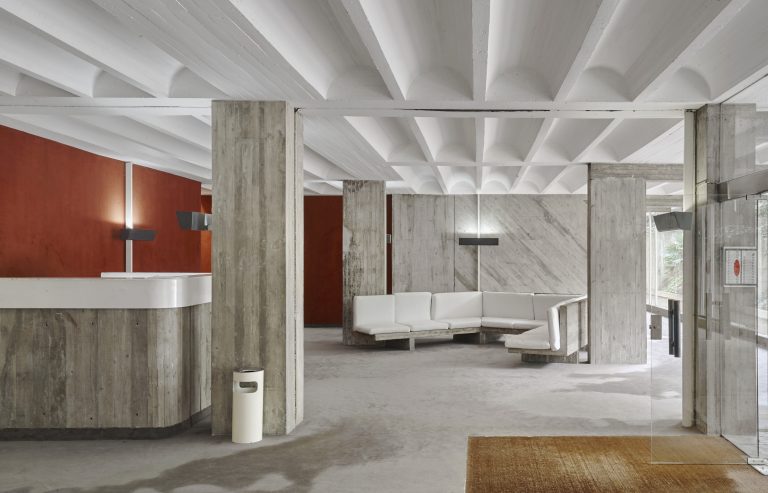The Sant Quintí I building is part of a wider project that includes a set of homes and apartments that occupies one side and two chamfers of an Eixample block, the buildings of which are independent by their type of development, although they maintain the façade unit and access to the parking floor.
It consists of 87 furnished apartments for rent, offices, commercial premises, communal laundry, bar-restaurant connected to the lobby and parking.
It is an outwardly compact, hermetic building, where the façade is shown as an envelope that covers everything and even tries to encompass the attic floors, perforated by openings, where the functions of the interior are not distinguished and that, determined by the corner geometry of the extension, adopts different alterations in the overhangs to accentuate the unity of the façade and give direction to it.
The two attic floors, set back from the façade are understood as part of it, belonging to the same surrounding, and it uses, in addition to the variation between the type plants, a metal structure added to the terraces of attics as an element that blurs the variations with the rest and gives longitudinal direction.
The scheme follows the typology of Barcelona's Eixample, with the inner courtyard as the backbone of the homes. It is very bright, with white tiled walls and crossed by the access roads to the apartments, opening to the outside and to the sun through a circular glass staircase of 4 m in diameter in the central area and connected on the SW-facing island patio.
The central courtyard, to which most of the bedrooms ventilate, organises the distribution in plan, and also in height as it reaches the ground floor and occasionally to the basement floor and constitutes the large hall space.






































